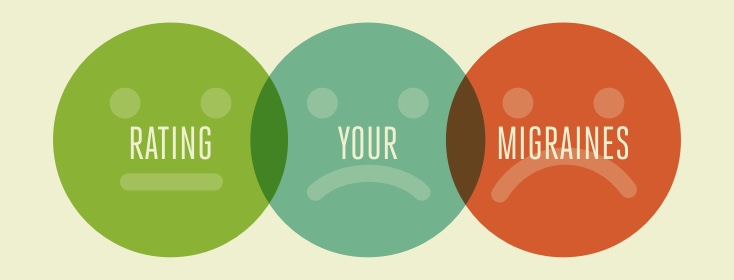How I Rate My Migraines
I have a rocky relationship with the pain scale.
Migraine symptoms besides pain
Though I think it can be a useful tool for communicating my pain level, I’ve come across several problems with it. First is rating my migraines simply on pain levels. I want to rate my attacks based on all the symptoms.
How does migraine pain compare to other pain?
I also don’t want to focus so closely on my own pain as that can sometimes magnify it. It may be part of my perfectionist personality, but I constantly re-evaluate what number I attribute to what level of pain and never feel like I get it quite right. This quest seems almost futile when you take into account the pain scale isn’t just for migraine pain, but for all pain. For example, I have no idea how a migraine would compare to childbirth, an often-used comparison. I also find many loopholes that stop me from ever rating a 10/10. For example, if I have what I consider a 10/10 migraine, and then I fall and hit my head, what is my pain level then? You get the picture.
How do I rate my symptoms?
As I explore how I felt about the pain scale, I realize that I am more interested in how the symptoms keep me from my life than how they fit on a universal pain scale. I decided a simpler system that took into account all my symptoms was in order. Here is what I came up with:
Mild
Rating 1/3: This migraine either resolves easily with medication or is not severe enough to treat. Its usual symptoms are limited to pain and mild sensory sensitivities. Because the pain isn’t severe, and my other symptoms are mild, I am able to carry on fairly normally. I may choose to limit certain triggering activities to avoid it becoming worse, but otherwise, I am not affected significantly.
Moderate
Rating 2/3: This migraine is likely more painful and comes with a few more symptoms like dizziness, fatigue, brain fog and more significant sensory sensitivities. With a 2/3 type I can still “pass” to others as normal with effort. My symptoms are often being held at bay by my medication. I have carried on with duties and responsibilities with a 2/3 but normal activities are more difficult. I can be easily distracted, move slower, and feel my productivity is compromised. I would likely be limited in doing certain types of movement and would definitely avoid situations that can trigger worse pain if at all possible.
Severe
Rating 3/3: This migraine has to have one of two elements: severe pain or other severe symptoms. Usually, it comes with both, but I’ve had silent attacks that could still be rated at a 3/3 because of vertigo, fatigue, or confusion that keeps me in bed or on the couch. This is a migraine that I cannot imagine functioning through, and any time I've tried the severity skyrockets. My medicine likely does not touch it until I take repeat doses, if at all. It usually has to go away on its own, and hopefully sooner rather than later!
How has this helped me analyze my attacks?
Having this rating system has helped me to simplify my migraine diary and look clearly at how my migraines are affecting my life. For example, a goal I have is to never go above a 2/3. There have been situations in the past when my specific pain levels have mattered more, but for now, this system suits me well.
How does my doctor feel about my rating system?
My doctor is happy to work with me, but if she weren’t then I would simply transfer the numbers to the more traditional pain scale when needed. I would definitely recommend thinking about designing your own system customized to your migraine types, goals, and needs.

Join the conversation